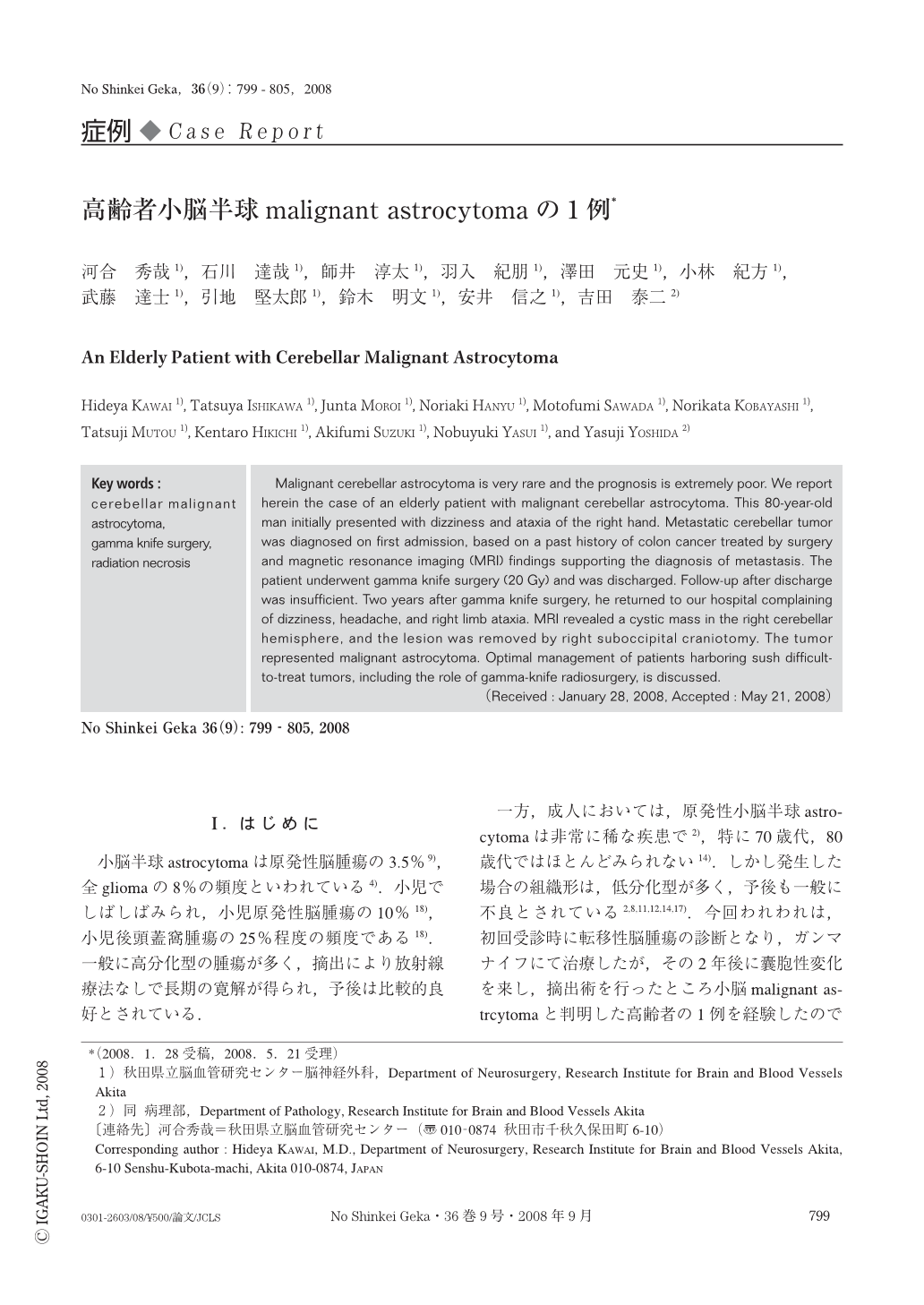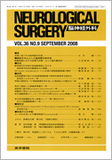Japanese
English
- 有料閲覧
- Abstract 文献概要
- 1ページ目 Look Inside
- 参考文献 Reference
Ⅰ.はじめに
小脳半球astrocytomaは原発性脳腫瘍の3.5%9),全gliomaの8%の頻度といわれている4).小児でしばしばみられ,小児原発性脳腫瘍の10%18),小児後頭蓋窩腫瘍の25%程度の頻度である18).一般に高分化型の腫瘍が多く,摘出により放射線療法なしで長期の寛解が得られ,予後は比較的良好とされている.
一方,成人においては,原発性小脳半球astrocytomaは非常に稀な疾患で2),特に70歳代,80歳代ではほとんどみられない14).しかし発生した場合の組織形は,低分化型が多く,予後も一般に不良とされている2,8,11,12,14,17).今回われわれは,初回受診時に転移性脳腫瘍の診断となり,ガンマナイフにて治療したが,その2年後に囊胞性変化を来し,摘出術を行ったところ小脳malignant astrcytomaと判明した高齢者の1例を経験したので治療上の反省点を含めて報告する.
Malignant cerebellar astrocytoma is very rare and the prognosis is extremely poor. We report herein the case of an elderly patient with malignant cerebellar astrocytoma. This 80-year-old man initially presented with dizziness and ataxia of the right hand. Metastatic cerebellar tumor was diagnosed on first admission, based on a past history of colon cancer treated by surgery and magnetic resonance imaging (MRI) findings supporting the diagnosis of metastasis. The patient underwent gamma knife surgery (20Gy) and was discharged. Follow-up after discharge was insufficient. Two years after gamma knife surgery, he returned to our hospital complaining of dizziness, headache, and right limb ataxia. MRI revealed a cystic mass in the right cerebellar hemisphere, and the lesion was removed by right suboccipital craniotomy. The tumor represented malignant astrocytoma. Optimal management of patients harboring sush difficult-to-treat tumors, including the role of gamma-knife radiosurgery, is discussed.

Copyright © 2008, Igaku-Shoin Ltd. All rights reserved.


